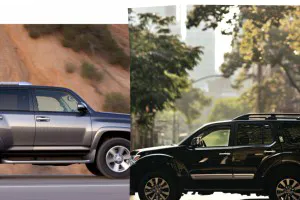There’s more to owning a vehicle than keeping the gas tank full. Vehicle maintenance can be daunting to car owners, but it doesn’t have to be. Your vehicle should have regularly scheduled maintenance on your tires, brake pads, and oil changes throughout its lifetime. Some maintenance is performed on an as-needed basis, while others are scheduled according to the manufacturer’s recommendations. When your odometer hits 100,000 miles, you must take additional maintenance steps to keep your vehicle running smoothly. Here are some items on a 100,000-mile maintenance checklist.
100,000 Mile Inspection
Whether you take your vehicle to a skilled mechanic or DIY at home, several main parts should be inspected as part of your 100,000-mile maintenance checklist. These parts include:
- All fluid levels
- Fuel lines, hoses, and connections
- Brakes, brake lines, hoses, and connections
- Exhaust system
- Timing belt
- Steering, suspension, and tie rod ends
- Boots, drive belt, seals, and drive shaft
- Air pressure and tire tread
- Parking brake
- Spark plugs
- Air filters
- Water pump
These parts should be thoroughly inspected, cleaned, and replaced if needed. You can expect to spend around $200 for just the inspection at your local mechanic shop. Any parts and labor for repairs resulting from the inspection would be an additional charge. Be sure to discuss anything different you’ve noticed while driving, such as if your vehicle is pulling to the side, making unusual noises, or you’ve noticed a decrease in fuel efficiency. These are symptoms of an issue with your vehicle that must be addressed promptly.
100,000 Mile Replacements
Some of your vehicle parts should be replaced at 100,000 to ensure your vehicle continues to run smoothly. Many of these should be replaced sooner than 100,000 miles as well. Check your manufacturer recommended maintenance schedule to see what should be replaced at what time since this list will vary from one vehicle to the next. But at 100,000 miles, most of these items should be replaced anyway. These may include:
- Air filter
- Coolant
- Timing belt
- Cabin air filter
- Transmission fluid
- Brake fluid
- Engine oil and filter
- Spark plugs
If you’ve maintained regular oil changes, your vehicle may or may not be ready for a change at 100,000 miles, but you should have one now if you’re unsure about when your last oil change was.
Maintaining Your Vehicle With Over 100,000 Miles
Once your vehicle is inspected and serviced for a 100,000-mile maintenance check, you’ll want to continue caring for it to help it last another 100,000 miles. A vehicle with more than 100,000 miles is considered high mileage, even though cars today are built to go 200,000 miles or more. Here are a few ways to help extend your vehicle’s life once you hit that 100,000-mile mark:
Switch to High-Mileage Oil
High mileage oil has special additives to provide additional support for older engines. These additives help to prevent breakdowns caused by deposits, sludge, friction, or leaks. High-mileage oil contains friction-reducing or anti-wear agents that help reduce wear and tear on the engine. In addition to providing your engine with extra protection, these special additives can also boost performance.
Perform Frequent Oil Changes
Once your vehicle hits 100,000 miles, the risk of build-up and dirt accumulation in your oil increases. Regular oil changes will give your engine the rust fighters and friction-reducing agents needed to keep your engine from wearing down faster.
Boost Your Fuel
Adding a fuel injector cleaner to your gas tank every 3,000 to 5,000 miles can help keep your system running efficiently and clean. Fuel injector cleaner is a quick, easy, and affordable way to help keep your engine running smoothly.
Flush Your Brake Fluid
Your brake system should be flushed every 60,000 miles to keep your system free of dirt, debris, and other contaminants that can damage your brakes. Flushing your brake system removes all these harmful elements and provides you with new, clean fluid that keeps your brakes running as they should.
Rotate Your Tires
To provide your tires with the most even wear and tear, you should have them rotated or rotate them yourself every 10,000 miles. Rotating your tires helps you get the most time out of your tread. Hitting the 100,000-mile mark is a good reminder to continue rotating your tires every 10,000 miles.
Get an Alignment
Once your tires are rotated, you should also get an alignment to ensure normal wear and tear on all vehicle parts. Your alignment should be inspected with every other oil change, and scheduling an alignment during tire rotation is a great way to keep everything in line.
Check Your Transmission Fluid
Transmission fluid lubricates the transmission of your vehicle, keeping everything performing well. Your driving habits can affect your transmission fluid needs, with most vehicles getting 80,000 to 100,000 miles without issue. After hitting 100,000 miles, it’s recommended to check your transmission fluid every 30,000 miles to stay on top of any potential problems. It should then be replaced as needed to keep your vehicle at the top of its performance.
Monthly Inspections
Each month you should inspect your vehicle’s tire pressure, coolant level, and oil level. Look in your owner’s manual, or the sticker on the inside of your driver’s door jam, to learn what tire pressures the manufacturer recommends for your particular vehicle.
You can measure your tire pressure with an inexpensive tire pressure gauge at home or use the one attached to the air pressure tank at your local gas station. Many vehicles also have a tire pressure monitoring system to tell when your PSI is too high or too low. Tire pressure can affect your vehicle’s handling and fuel economy, so it’s important to maintain the proper pressure.
Check all of your fluids as well and make sure they are topped off at the “full” level. If your fluids are routinely low during your monthly inspections, you may want to consult a mechanic to determine if there’s a more significant issue.
Never Miss Important Maintenance Again with FIXD
You’ll never miss important maintenance again with the FIXD Sensor and app. This app provides a customized maintenance schedule based on your vehicle’s make, model, and mileage. FIXD sends your phone automated alerts when maintenance is due, including oil and filter changes, tire rotations, wiper blades, and your battery.

At FIXD, our mission is to make car ownership as simple, easy, and affordable as possible. Our research team utilizes the latest automotive data and insights to create tools and resources that help drivers get peace of mind and save money over the life of their car.














